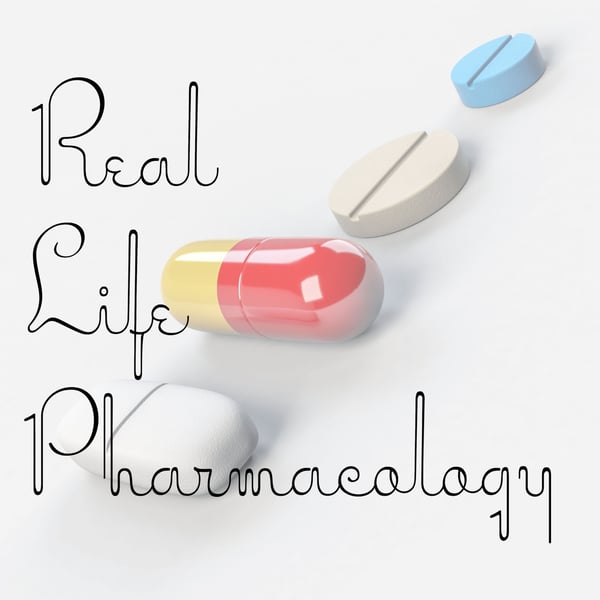Dopamine Agonists – RLP Episode 018
Real Life Pharmacology - Pharmacology Education for Health Care Professionals
Eric Christianson, PharmD; Pharmacology Expert and Clinical Pharmacist
5 • 716 Ratings
🗓️ 7 June 2018
⏱️ 8 minutes
🧾️ Download transcript
Summary
All subscribers to the website/podcast will get access to a FREE Top 200 Drug Study Guide where I highlight the 3 most highly testable pearls from each medication (this is a 31 page PDF!) In addition, you’ll get a free 100 question pharmacology test. Both resources are free, simply for following the podcast! What are you waiting for? Click Here to Subscribe
Transcript
Click on a timestamp to play from that location
| 0:00.0 | Welcome back to the real-life pharmacology podcast. |
| 0:04.6 | Hope you're enjoying the first few episodes there. |
| 0:08.4 | We're up to number 18, I believe, here. |
| 0:12.3 | And with this episode, I'm going to cover dopamine agonis. |
| 0:18.3 | Okay, so this class of medication is typically referred to as Parkinson's medication or an anti-parkinson's type agent. |
| 0:30.7 | And the two classic medications that I always see used in clinical practice is pramapixel, which the brand name for that is Myrapex, Enropineral. |
| 0:41.6 | Brand name is Requip. |
| 0:44.5 | Now, again, dopamine agonist, |
| 0:46.9 | so this is going to stimulate dopamine receptors in the central nervous system, |
| 0:53.2 | and in giving that dopamine stimulation, |
| 0:58.3 | that can help manage Parkinson's. So with that said, I've talked about the antipsychotics |
| 1:06.4 | before in their role as being a dopamine antagonist. |
| 1:13.2 | So if you remember these agents, |
| 1:15.0 | the prima peypaxil and the ripineral, |
| 1:17.6 | these are going to be dopamine agonists, |
| 1:21.3 | so the opposite of antipsychotic type medications as far as their mechanism of action goes. |
| 1:25.9 | So hopefully that can allow you to remember that these medications can be used for |
| 1:35.7 | Parkinson's. In clinical practice, however, most often I see these medications used for restless leg syndrome. |
| 1:47.0 | So a very important distinction to remember there. |
| 1:51.1 | Memorable side effects from these medications. |
| 1:54.7 | Orthostasis can happen. |
| 1:56.9 | Rarely I've seen edema happen or kind of swelling around the ankles. |
... |
Please login to see the full transcript.
Disclaimer: The podcast and artwork embedded on this page are from Eric Christianson, PharmD; Pharmacology Expert and Clinical Pharmacist, and are the property of its owner and not affiliated with or endorsed by Tapesearch.
Generated transcripts are the property of Eric Christianson, PharmD; Pharmacology Expert and Clinical Pharmacist and are distributed freely under the Fair Use doctrine. Transcripts generated by Tapesearch are not guaranteed to be accurate.
Copyright © Tapesearch 2025.

